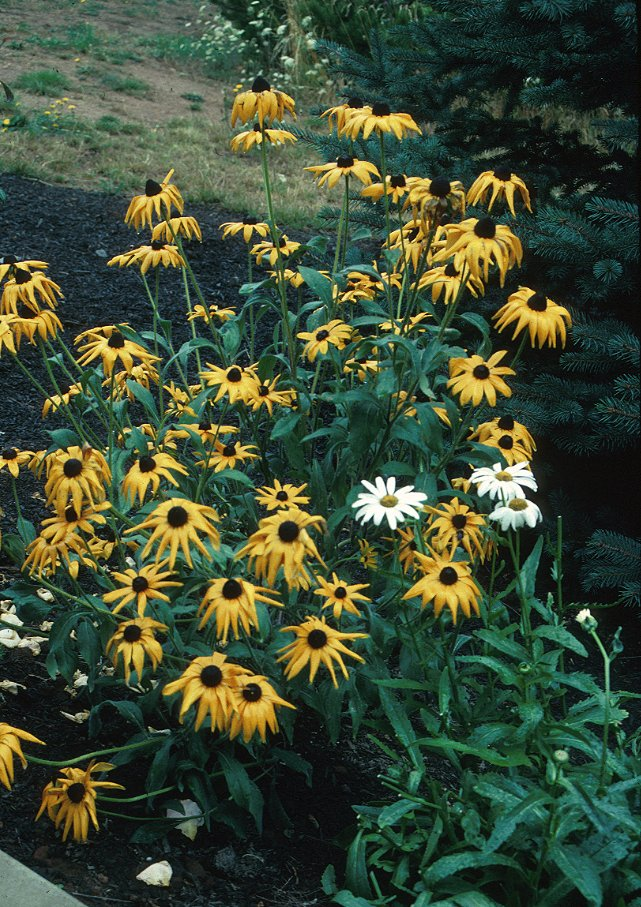| Botanical Name: Rudbeckia fulgida sullivantii 'Goldsturm | |
| Common Name: Goldsturm Rudbeckia |

-
Anatomy
-
Culture
-
Design
Plant Type
Perennial
Height Range
1-3'
Flower Color
Gold
Flower Season
Summer, Fall
Leaf Color
Dark Green
Bark Color
n/a
Fruit Color
Black, Brown
Fruit Season
Winter
Sun
Full
Water
Medium, Extra in Summer
Growth Rate
Fast
Soil Type
Sandy, Clay, Loam, Rocky, Unparticular
Soil Condition
Average, Rich, Well-drained, Dry
Soil pH
Neutral
Adverse Factors
Attracts Bees, Invasive
Design Styles
English Cottage, Meadow, Mediterranean, Ranch
Accenting Features
Showy Flowers
Seasonal Interest
Summer, Fall
Location Uses
Perennial Border, Shrub Border, Foundation, Parking Lot, Roadside, Walls / Fences
Special Uses
Cut Flowers, Mass Planting, Naturalizing
Attracts Wildlife
Birds, Butterflies
Information by: Stephanie Duer
Photographer: Linda Engstrom, JJ Neilso
Photographer: Linda Engstrom, JJ Neilso
-
Description
-
Notes
'Goldsturm' may be the most popular rudbeckia and its no wonder, with its long season of bloom and vivid color. Exceptional large flowers (3 to 5 inches across) bloom on sturdy stems from mid-summer into early fall. The petals are a deep yellow, and they surround a prominent dark brown center. An excellent cut flower, leave some behind for the birds, that greatly appreciate the seed well into the winter months. Foliage is lance-like to oval and deep green. Grows about 24 to 36 inches tall and wide. Use in a perennial border, cottage garden, meadow or naturalized area.
Grow in well drained soil and in full sun. Tolerates a range of soil types, including clay soil, dry soil, shallow soil, rocky soil. Drought and heat tolerant. Though prefers full sun, will tolerate a little shade. Rhizamatous habit means it spreads to form dense colonies, so just plan accordingly when you plant it. Leave flower stalks all winter as the seeds will feed the songbirds and provide winter interest. Cut back stalks and old foliage in late winter. Drought tolerant once established, but blooming period will be longer and more flowerful if watered periodically.